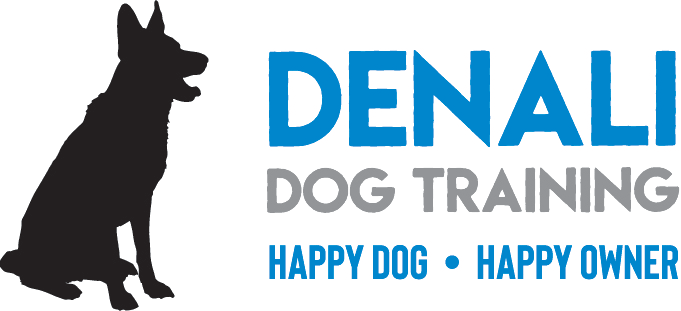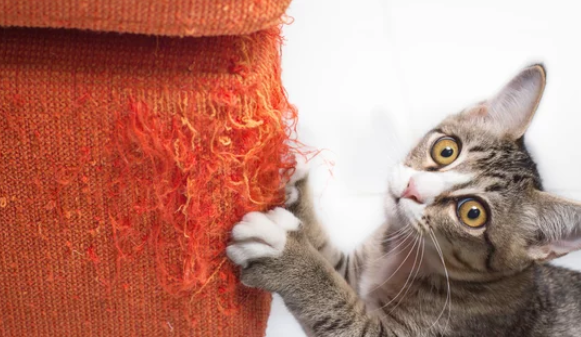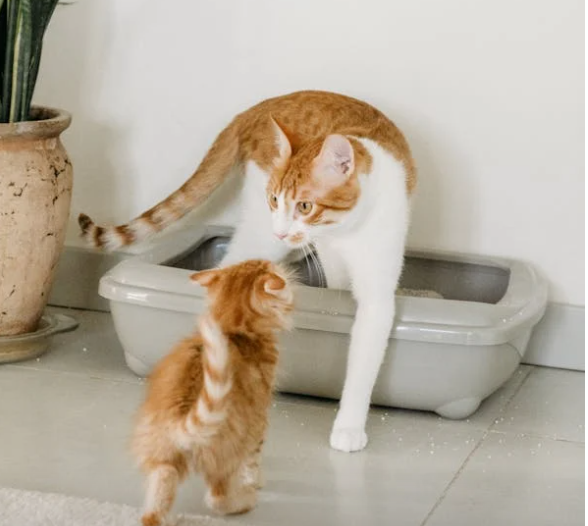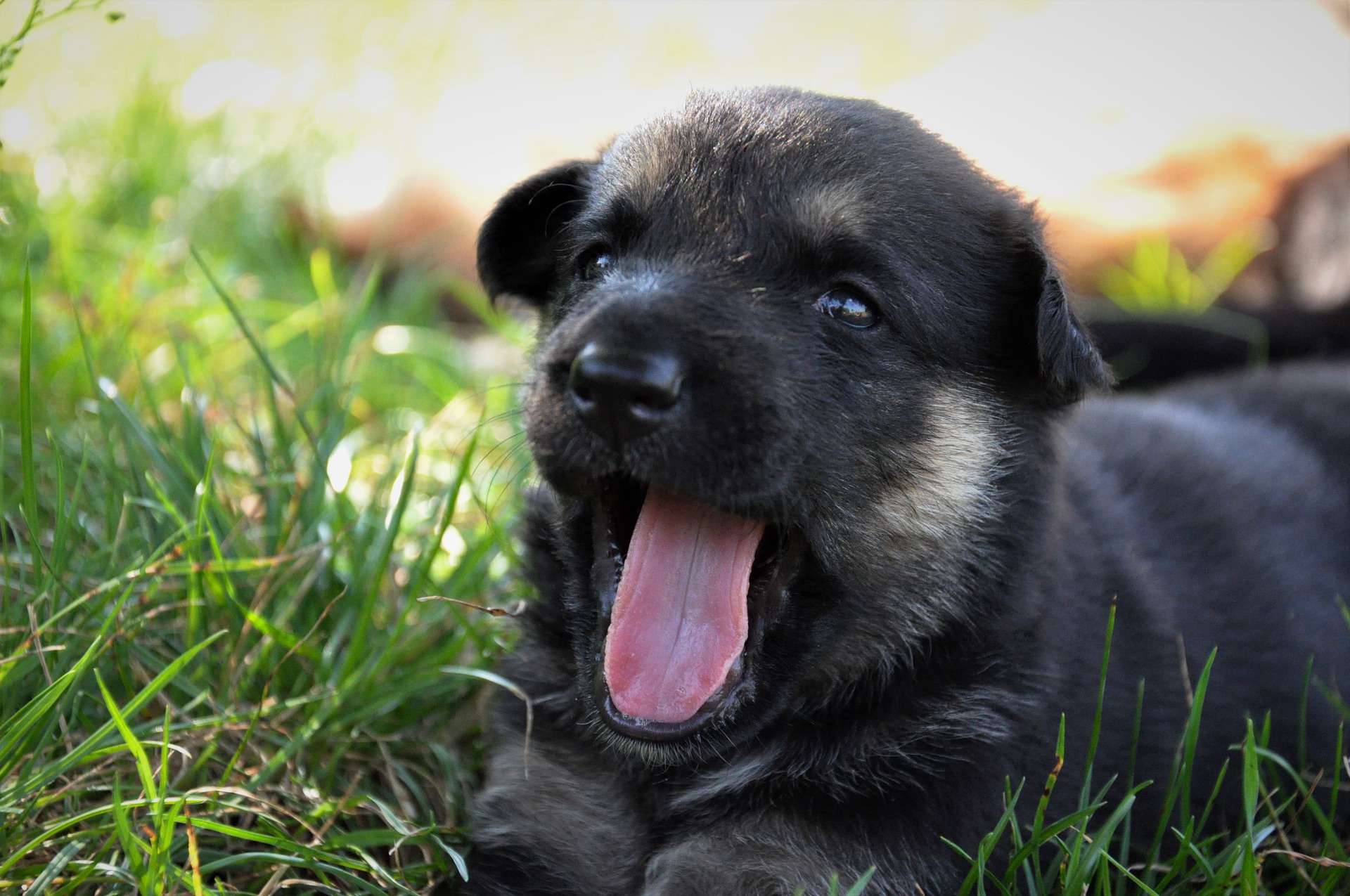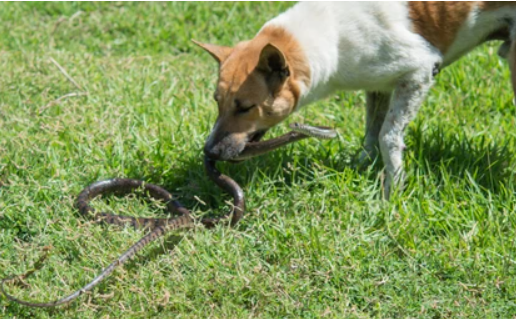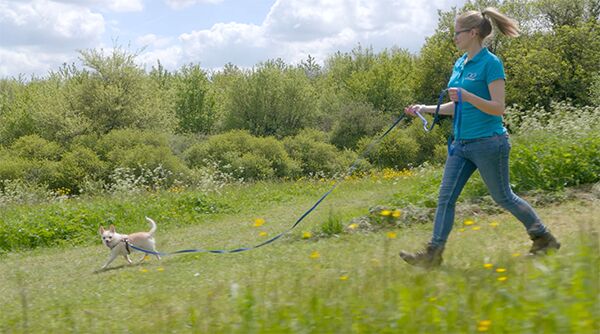Cats scratch furniture to -
-shed outer claw covering and sharpening the new claws
-stretch the body
-claim ownership of the object and surrounding territory
-expressing emotion eg excitement
If you catch your cat scratching furniture you should distract , divert , or deter . You should not yell, punish, handle roughly , move, or spray the cat with water . This is because the cat will associate the unpleasantness not with the scratching but with YOU. If you punish your cat for scratching in fron of you you will find it more difficult to encourage it to use the appropriate post in front of you .
Toss a treat or toy , walk away into another room and call the cat , or get out a toy - wave a fishing wand toy around .
Why is the cat scratching there ? No alternative? Provide one . Claiming territory ? Conflict with another cat ? Work on improving the relationship and provide more scratching places .
Provide a better alternative . If you have no scratching post, provide one . If you have one that the cat doesn't use , look at why .
A scratching post needs to be sturdy ( no tipping if jumped on or climbed up ), tall enough to stretch on , doesn't move , has a grippable surface , and is located in the right place - usually in the centre of territory or near resources . An expensive scratching post is worth the money it will save you in ruined furniture .
Dont throw away an old well loved scratching post . Cut off any strings ( your cat must swallow any string that gets caught on it's tongue) and encourage use by adding toys, catnip ,treats, etc . If you replace it , place a new one beside it and make it attractive with dangly toys , treats, etc . Rubbing a new post with catnip will appeal to some cats , placing cat treats on it regularly will definately help .
Some cats prefer wood, some corrugated cardboard, some rope, some sisal. Some like carpet but it needs to be rough and without loops that will catch claws . Provide a stump or log , buy a good ready made scratching post , build your own( you can use carpet with the back facing out as the scratching surface , or attach a piece of carpet or sisal to a wall if you like ! The more perches and beds it can accomadate the better - cats need heights they can access. It may need to be near a window or in a place central to the home . As with litter boxes , if it is in the wrong place it will not get used .
Over time a post will get wear and tear and become loose , so ensure it remains solid and safe .
More than one cat will need more than one scratching post . One portable scratching post is a good idea . Place multiple posts or corrugated cardboard scratching boards in various places so one cat cant guard them all. A post by a food bowl or a sleeping place is usually a good spot . Sometimes it will be near a doorway. Place a post in an area where a cat sprays .
Location is important . Note where your cat likes to scratch and where it hangs out or naps , and place posts there .Move the old target ( eg lounge) , to one side a few feet temporarily , and place the post there. Treat the cat every time it uses the post .
When buying new furniture, look at it from the perspective of how appealing it is to scratch on, and avoid that if possible. Smooth fabric is a better option for being unappealing to your cat ( but not leather or vinyl which will be too easy to put holes in ). When your new furniture arrives , make the scratching post more appealing then usual. If your cat scratches a piece of furniture in one location, moving that to somewhere else, or making it completely inaccessible if possible ,and placing a post there or if you cant move it away placing post beside it , can solve the problem. Clean scratched furniture with an enzyme based cleaner if possible to de -scent it .
When your cat is reliably using the new post , you can put the furniture back . Making the new post as attractive as possible and covering the furniture with a slip cover will help( you can place sticky paws over it if wanted ), or covering it with plastic garden lattice , rough sandpaper , sticky paws ( an adhesive sheet you can stick to the item to discourages the cat from scratching .) or double sided tape, or place strong citrus scent or vinegar on the item ( not close to the post ). Play around the post with your cat . Scratching the post yourself in front of the cat may work ! Don't place the cat's paws on the post becue this will put it off.
Providing enrichment - play and hunting eg interactive feeding puzzles - is always helpful no matter the behaviour problem.
